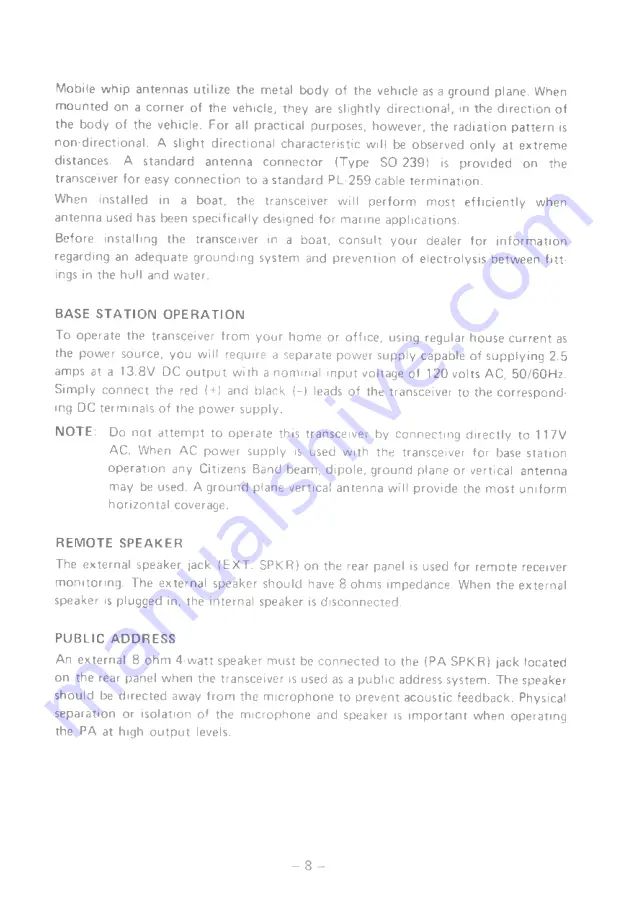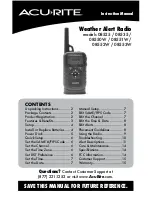
Mobile whip antennas utilize the metal body of the vehicle as a ground plane. When
mounted on a corner of the vehicle, they are slightly directional, in the direction of
the body of the vehicle. For all practical purposes, however, the radiation pattern is
non-directional. A slight directional characteristic w ill be observed only at extreme
distances. A standard antenna connector (Type SO 239) is provided on the
transceiver for easy connection to a standard PL-259 cable termination.
When installed in a boat, the transceiver w ill perform most efficiently when
antenna used has been specifically designed for marine applications.
Before installing the transceiver in a boat, consult your dealer for information
regarding an adéquate grounding system and prévention of electrolysis between f i t t
ings in the hüll and water.
BASE STATION OPERATION
То operate the transceiver from your home or office, using regulär house current as
the power source, you w ill require a separate power supply capable of supplying 2.5
amps at a 13.8V DC output with a nominal input voltage of 120 volts AC, 50/60Hz.
Simply connect the red (+) and black (-) leads of the transceiver to the correspond-
ing DC terminais of the power supply.
NOTE: Do not attempt to operate this transceiver by connecting directly to 117V
AC. When AC power supply is used with the transceiver for base station
operation any Citizens Band beam, dipole, ground plane or vertical antenna
may be used. A ground plane vertical antenna w ill provide the most uniform
horizontal coverage.
REMOTE SPEAKER
The external speaker jack (EXT. SPKR) on the rear panel is used for remote receiver
monitoring. The external speaker should hâve 8 ohms impédance. When the external
speaker is plugged in, the internai speaker is disconnected.
PUBLIC ADDRESS
An external 8 ohm 4-watt speaker must be connected to the (PA SPKR) jack located
on the rear panel when the transceiver is used as a public address system. The speaker
should be directed away from the microphone to prevent acoustic feedback. Physical
séparation or isolation of the microphone and speaker is important when operating
the PA at high output levels.
-
8
-


































